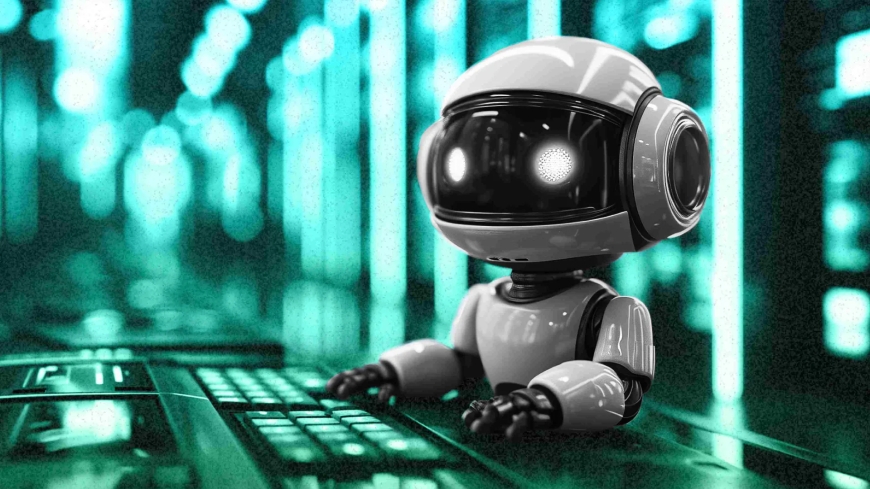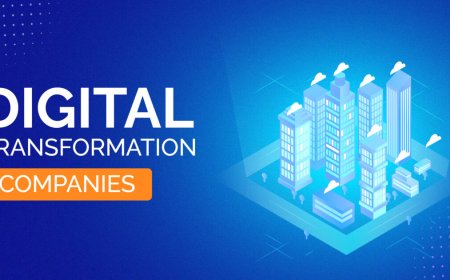How Is AI Agent Development Transforming Enterprise Workflows?
AI Agent Development is revolutionizing how enterprises operate by introducing intelligent, autonomous systems that streamline, automate, and optimize complex workflows.

In todays fast-paced digital economy, enterprises are under immense pressure to stay agile, reduce costs, and deliver faster results all while maintaining high quality and customer satisfaction. Traditional workflow automation tools, while helpful, are often limited to rule-based systems and static processes. Enter AI Agent Development a revolutionary approach that is reshaping enterprise workflows by introducing intelligent, autonomous agents that can think, learn, and act independently.
This blog explores how AI agent development is transforming enterprise workflows, what makes it different from traditional automation, and why it is becoming a cornerstone of modern business operations.
What Is AI Agent Development?
AI Agent Development involves creating intelligent software entities known as AI agents capable of performing tasks autonomously within a system. These agents are equipped with capabilities such as:
-
Natural Language Understanding
-
Real-time Decision Making
-
Continuous Learning
-
Goal-Oriented Task Execution
Unlike traditional bots or RPA scripts, AI agents go beyond repetitive tasks. They can handle complexity, make contextual decisions, adapt to change, and collaborate with humans or other systems fundamentally transforming enterprise workflows.
The Current Enterprise Workflow Landscape
Before diving into how AI agents transform workflows, its essential to understand the limitations of traditional enterprise processes:
-
Siloed operations leading to inefficiencies
-
Manual decision-making that slows down processes
-
Repetitive tasks consuming valuable human resources
-
Static automation tools that cant adapt in real time
-
Data overload with limited real-time insights
AI agents are designed to address these pain points by introducing intelligence, adaptability, and automation at scale.
1. Intelligent Task Automation
AI agents automate not just routine tasks but also decision-driven workflows. For example, in finance departments, agents can process invoices, detect anomalies, and determine whether to approve or escalate a payment.
Key Benefits:
-
Faster turnaround time
-
Reduced human error
-
Operational cost savings
By automating repetitive yet decision-intensive processes, AI agents free up human employees for strategic, creative, or customer-facing roles.
2. Seamless Interdepartmental Coordination
Enterprise workflows often span multiple departments, such as sales, marketing, customer support, and IT. These workflows typically involve back-and-forth communications, leading to delays and misalignment.
AI agents can act as coordinators, managing cross-functional workflows in real time:
-
Notifying sales teams about qualified leads
-
Informing marketing about campaign performance
-
Updating CRM systems with new customer data
-
Assigning tasks to appropriate teams based on rules or predictions
Result:
Organizations experience improved collaboration, data consistency, and workflow continuity, without the friction of manual coordination.
3. Real-Time Data Processing and Decision-Making
Traditional workflows often rely on batch processing or delayed decision-making due to lack of real-time insights. AI agents solve this with continuous data ingestion and on-the-fly decision-making capabilities.
For example:
-
In e-commerce, AI agents can monitor inventory, forecast demand, and automatically reorder stock.
-
In customer service, AI agents assess sentiment in real time and escalate high-priority complaints.
By enabling real-time reactions, AI agents empower businesses to be more proactive rather than reactive.
4. Personalized Customer Interactions
In customer-facing workflows, personalization is key. AI agents help deliver personalized experiences at scale by:
-
Analyzing customer behavior and preferences
-
Recommending products or services
-
Engaging users via chat, email, or voice
-
Following up based on previous interactions
Whether it's in banking, retail, or healthcare, AI agents are improving customer journeys by making every interaction more contextual, efficient, and human-like.
5. Adaptive Workflows with Continuous Learning
A major limitation of traditional automation is rigidity. Once set, workflows don't adapt unless manually reprogrammed. AI agents, however, leverage machine learning to adapt and improve workflows over time.
Example:
In HR, an AI agent might begin by automating leave requests. Over time, it can learn patterns and predict attrition risks, recommend training modules, and optimize onboarding workflows.
This evolutionary approach to workflow automation ensures processes improve continuously based on real-world data.
6. Multi-Agent Collaboration
In more complex scenarios, enterprises deploy multiple AI agents that collaborate to execute and optimize workflows.
Example:
-
One agent handles customer queries
-
Another manages logistics and delivery
-
A third analyzes feedback and improves service
These agents can communicate, share data, and coordinate actions similar to a digital team. This multi-agent system architecture ensures scalability and flexibility as enterprises grow.
7. Integration with Enterprise Tools
AI agents dont operate in isolation. They integrate seamlessly with existing tools and platforms such as:
-
CRM (e.g., Salesforce, HubSpot)
-
ERP (e.g., SAP, Oracle)
-
Communication tools (e.g., Slack, Teams)
-
Helpdesk software (e.g., Zendesk, Freshdesk)
Through APIs and plugins, AI agents embed themselves into enterprise ecosystems, acting as a smart interface between people, data, and systems.
8. Workflow Transparency and Analytics
AI agents are capable of generating rich logs, metrics, and insights about how workflows are executed, where bottlenecks occur, and how performance can be improved.
This empowers enterprise leaders to:
-
Make data-driven workflow optimizations
-
Identify and eliminate inefficiencies
-
Track ROI of automation initiatives
With built-in analytics dashboards, AI agents turn opaque processes into transparent, measurable systems.
Real-World Examples of AI Agent-Driven Workflow Transformation
1. Klarnas Customer Support AI Agent
Klarna uses AI agents to handle over two-thirds of its customer support interactions in 35 languages. These agents manage end-to-end workflows from identifying issues to resolving them, drastically reducing wait times.
2. Microsofts Copilot in Office 365
Microsofts AI Copilot serves as an agent embedded in Word, Excel, and Teams assisting with summarizing meetings, drafting emails, creating spreadsheets, and managing projects.
3. Amazons AI in Supply Chain
Amazon deploys AI agents to manage inventory, optimize delivery routes, predict demand, and handle vendor communications creating one of the most efficient logistics workflows in the world.
Challenges to Consider
Despite its transformational benefits, AI agent development also comes with challenges:
-
Data privacy and compliance concerns
-
Security risks due to autonomous decision-making
-
Cultural resistance to automation in traditional enterprises
-
Initial development and integration costs
-
Need for governance frameworks to prevent unintended behavior
Enterprises must address these challenges proactively with ethical guidelines, transparent algorithms, and strong cybersecurity protocols.
The Future of Enterprise Workflows with AI Agents
As AI agent technology matures, we will witness a future where:
-
Workflow creation is no-code: Business users can deploy agents without technical knowledge.
-
Agents co-create with humans: Real-time collaboration between humans and agents will become the norm.
-
Enterprises run on agent OSs: Entire companies may operate on platforms powered by interconnected AI agents coordinating every department.
This represents a paradigm shift not just in how work gets done, but in how enterprises think, plan, and innovate.
Final Thoughts
AI Agent Development is not just a trend it's a transformational force thats redefining how modern enterprises operate. By embedding intelligence into workflows, organizations are achieving greater speed, accuracy, and agility than ever before.
Whether it's automating tasks, enhancing decision-making, or personalizing experiences, AI agents are streamlining operations in ways that were once thought impossible.































